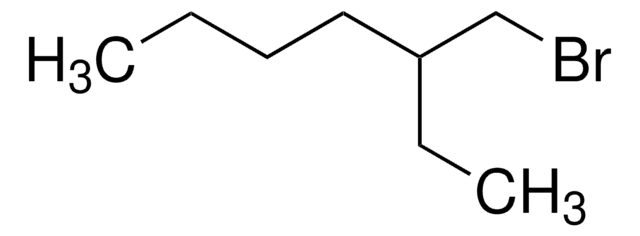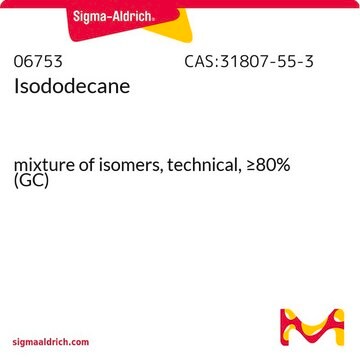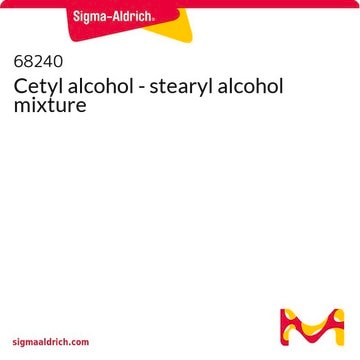464481
2-Octyl-1-dodecanol
97%
Synonym(s):
Octyldodecanol
Sign Into View Organizational & Contract Pricing
All Photos(1)
About This Item
Linear Formula:
CH3(CH2)9CH[(CH2)7CH3]CH2OH
CAS Number:
Molecular Weight:
298.55
EC Number:
MDL number:
UNSPSC Code:
12352100
PubChem Substance ID:
NACRES:
NA.22
Recommended Products
Quality Level
Assay
97%
refractive index
n20/D 1.453 (lit.)
bp
234-238 °C/33 mmHg (lit.)
mp
−1-1 °C (lit.)
density
0.838 g/mL at 25 °C (lit.)
functional group
hydroxyl
SMILES string
CCCCCCCCCCC(CO)CCCCCCCC
InChI
1S/C20H42O/c1-3-5-7-9-11-12-14-16-18-20(19-21)17-15-13-10-8-6-4-2/h20-21H,3-19H2,1-2H3
InChI key
LEACJMVNYZDSKR-UHFFFAOYSA-N
Looking for similar products? Visit Product Comparison Guide
General description
2-Octyl-1-dodecanol is a branched alcohol.
Application
2-Octyl-1-dodecanol may be used to investigate its interaction with the hexameric capsules of resorcin[4]arene. It has been used as diluent in a extractant screening study for the recovery of putrescine (butylene-1,4-diamine, BDA) and cadaverine (pentylene-1,5-diamine, PDA) from aqueous solutions (fermentation broths) by liquid-liquid extraction.
Storage Class Code
10 - Combustible liquids
WGK
nwg
Flash Point(F)
370.4 °F - open cup
Flash Point(C)
188 °C - open cup
Personal Protective Equipment
dust mask type N95 (US), Eyeshields, Gloves
Choose from one of the most recent versions:
Already Own This Product?
Find documentation for the products that you have recently purchased in the Document Library.
Customers Also Viewed
Strontium removal by new alkyl phenylphosphonic acids in supported liquid membranes with strip dispersion.
Ho WSW and Wang W.
Industrial & Engineering Chemistry Research, 41(3), 381-388 (2002)
Extractive recovery of aqueous diamines for bio-based plastics production.
Krzyzaniak A, et al.
Journal of Chemical Technology and Biotechnology, 88(10), 1937-1945 (2013)
Nancy Sharma et al.
Artificial cells, nanomedicine, and biotechnology, 45(3), 409-413 (2016-03-26)
The objective of present work was to enquire the potential use of embelin-loaded nanolipid carriers for brain targeting. The average particle size and polydispersity index (PDI) of optimized formulation (F19) were found to be 152 ± 19.7 nm and 0.143 ± 0.023, respectively. Nanolipid carrier
Bethânia Andrade de Vargas et al.
Journal of biomedical nanotechnology, 8(2), 330-336 (2012-04-21)
This article describes the development of topical hydrogels containing genistein-loaded nanoemulsions, obtained by means of spontaneous emulsification. This procedure yielded monodisperse nanoemulsions in a sub 250 nm range exhibiting negative zeta-potential and low viscosity. The formulations were incorporated into acrylic-acid
Genital swelling caused by octyldodecanol contact dermatitis.
G Dawn et al.
Clinical and experimental dermatology, 28(2), 228-229 (2003-03-26)
Our team of scientists has experience in all areas of research including Life Science, Material Science, Chemical Synthesis, Chromatography, Analytical and many others.
Contact Technical Service














